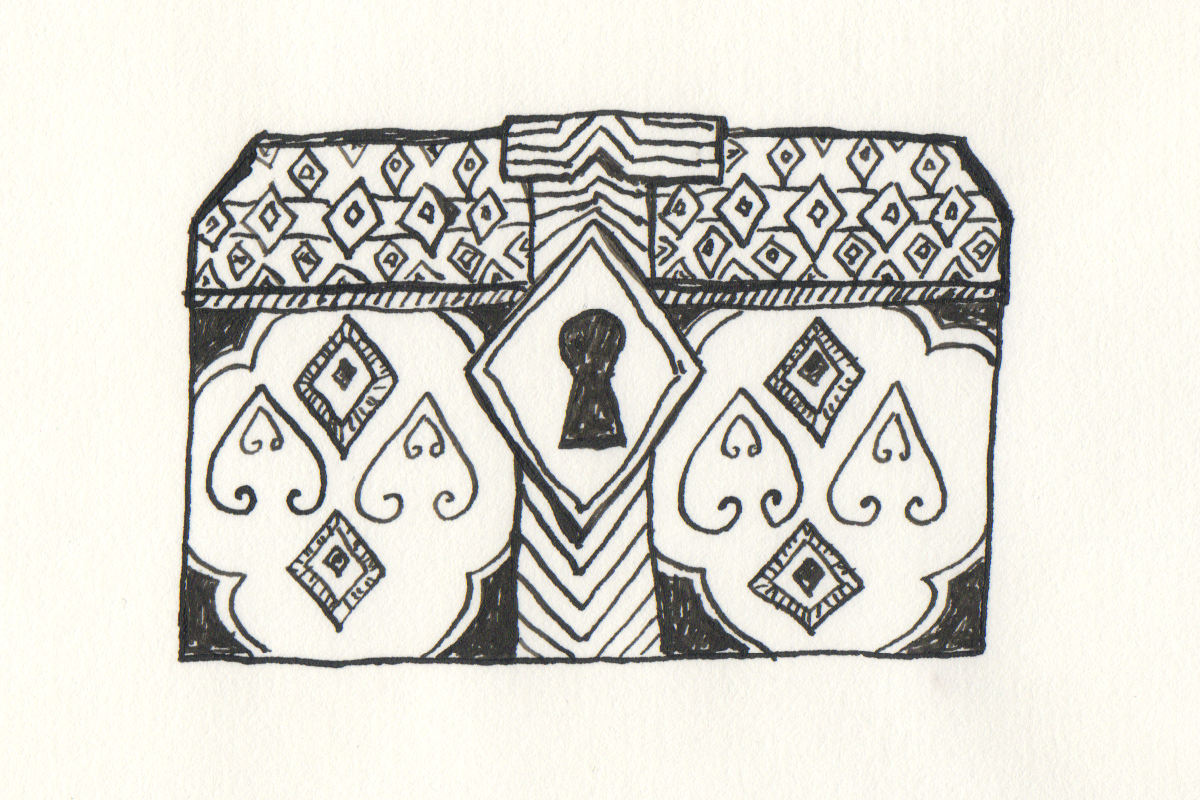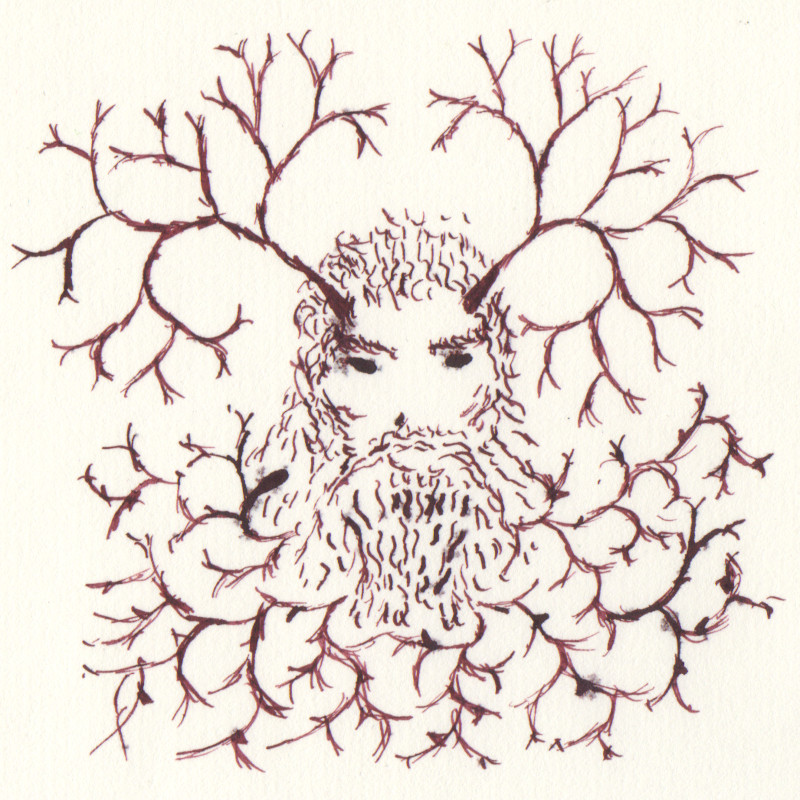Review: The Moon Moth and Rose/House
Science-fiction murder mysteries by Jack Vance and Arkady Martine
by
Updated on June 4, 2024 with updated information about where you can buy a hardcover and ebook version of Rose/Hose.
I didn’t intend to have some kind of crossover noir murder mystery science fiction novella double feature when I read “The Moon Moth” and Rose/House on the same weekend. I just wanted to read Jack Vance’s “The Moon Moth” (1961) because Alzabo Soup was discussing it and it sounded cool. And I picked up Arkady Martine’s Rose/House (2023) because I loved A Memory Called Empire, and I’ll devour anything she publishes. Other than a lush prose style and the genre crossover, they don’t have that much in common. But maybe that’s enough to start talking about.
The unfolding mystery #
Part of the fun of science fiction is figuring out how the world works. Writers can hold back some information about the world and let you figure it out from clues to fun effect. Some, in my opinion, do it to an excess and hold back important information as a cheap trick to hook you rather than having it serve the narrative or mood or whatever goals the story has. Joke’s on them, if a story holds back on world building just for fake tension, I get frustrated and skip ahead. If the story falls apart without that element then it wasn’t a very good story, was it?

Both “The Moon Moth” and Rose/House use world building slow reveals effectively. And here’s where I think there’s a neat structural overlap between a murder mystery and science fiction. In a mystery, the writer of course knows who-done-it (or alternatively, how they will be caught) but they skillfully reveal enough to let you start figuring it out and lead you to a satisfying ending, if not necessarily a neat conclusion. So if you can combine the unfolding mystery of the world with the unfolding mystery of the murder, ideally having the protagonist use elements of the revealed world to solve the murder, that works very well.
Both pieces also tend towards noir, in that the world is corrupt, or maybe fallen, and in neither case do you get exactly a happy ending. Even insofar as the characters prevail, it doesn’t lead to justice or even closure.
Everybody wears a mask and is incredibly selfish #
In “The Moon Moth” our protagonist is an off-world ambassador poorly adjusting to the customs of Sirene, a planet where everyone always wears a mask because showing the face you were born with does not afford sufficient control over the message you wish to express with your appearance. People don’t just wear one mask, but switch out masks depending on the circumstances and what they want to convey.

As you may imagine, in a world where everyone wears a mask that entirely covers their face and most of their head, identifying people can be pretty tricky. That’s too bad for our protagonist because he has to track down and kill a dangerous assassin.
Another feature of Sirene, which comes out more and more as you read, is that everyone is extremely selfish. They say they are self-reliant, which is sort of true. Everyone (except for the slaves who are never explained) has enough and anything you might want from another person is surplus, and no one really needs the help of another for survival needs. But people are unwilling to get involved or help one another, except in as far as it might help their own status. Quite literally if a person were drowning, no one would throw them a rope because they don’t want to get involved. Unless it raised their status or piqued their curiosity.
I’m leaving (so many!) things out because I’m trying to emphasize a certain allegorical reading of “The Moon Moth” that I hope is becoming obvious.
I swear someone must have told me about “The Moon Moth” in the early 2000s, because as soon as I read it, I thought, ah yes, of course, this is the story about how everyone wears a mask and it is an allegory for life on the internet. Or, at least, life on the internet before we started using our real faces and names on the internet. The idea didn’t seem like something I came up with, but like something that I remembered.
Whoever told me about the masks as an allegory for shifting online identities didn’t mention the incredible selfishness and the obsession with status. I don’t think all online spaces are like that, but a lot I’ve participated in sure have been. Again, perhaps the allegory made more sense when there wasn’t any money at stake and it was just all about who could be the meanest and cleverest flame warrior on alt.gothic, or, if you wanted true viciousness, alt.tarot. I do not kid, though, I do, perhaps, both date and out myself a bit.
Where to read “The Moon Moth” #
There’s a lot more to “The Moon Moth” and at just 39 pages, it’s worth giving it a shot even if you aren’t sure you’ll like it. You can get it as part of the collection The Moon Moth and Other Stories. Or, you can listen to an excellent narration for free. In 2013, the podcast StarShipSofa got permission to serialize an audio narration. Listen to Part 1 and Part 2 on StarShipSofa.
An AI that is a house that tells lies and might be a little bit murdery #
I could say that Rose/House is a locked room mystery, but that would be selling it short. Except maybe if I add that the locked room is an AI and is itself on the suspect list, that gives it more of its proper credit. The titular Rose House is an architectural marvel and quite possibly its dead (of old age) architect’s crowning achievement. For reasons we never quite learn, he stipulated in his will that at his death Rose House would be shut up with all his archives and watched over by its AI, which permeates the house. Only one person, the architect's estranged former protege, is allowed to enter the house, and only for a week per year. As we begin the story, the house makes a legally required phone call to a police precinct to report a dead body on its premises. How did someone get inside? How did they die? How can the detective get inside to retrieve the body if only the protege is allowed inside? These are the animating mysteries that drive the plot. But the plot is only half (at most) of the mystery.
I wouldn’t really want to say too much about Rose/House that explains the world building beyond the book blurb, since it just came out on April 18, and most people haven’t yet had a chance to read it. Not only that, Rose/House is definitely an unfolding mystery of world building and the pleasure of your first read might be diminished by knowing too much beyond the setup.
The conception of an AI that is also a house and that is bound by rules and logic that don’t entirely map to human ones and is therefore potentially very dangerous is the most intriguing part of the novella. When the characters try to negotiate with it, it has strange resonances between negotiating with the fay and trying to pull off a prompt injection attack.
I don’t know when Arkady Martine got the idea for Rose/House and wrote it. At times it feels like a very pointed commentary on both the Internet of Things and our current moment of fear and excitement about conversational AI.
Haunted architecture #
The people who live near Rose House, who are just normal people and not obsessive architecture fans, call it “a haunt.” And I got the impression that there were other buildings, maybe other whole cities, that were inhabited by AIs and people generally felt uneasy about that. The idea that an Internet of Things house is kind of haunted has been floating around, and so has the very phrase “the ghost in the machine.” But the way that “a haunt” becomes a derisive term in Rose/House feels fresh to me.
If you know a bit about 20th-century architects, especially the assholes, Rose/House is extra fun. I only know a tiny bit, and mostly from reading Seeing Like a State a couple of years ago, which was enough to pick up on the digs at Le Corbusier and his plans for Brasilia.
The story made modern(ist) architecture feel like the right setting for an AI ghost story just as a medieval castle feels like the right setting for a vampire story and a Victorian pile the right setting for a traditional ghost story. Of course, by the time the story is set, a modernist house would be a bit of an antique. Even now, brutalist architecture is mostly a thing of the past, and more’s the shame.
Where to read Rose/House #
You can buy a limited-edition hardcover of Rose/House from Subterranean Press. They previously also sold an ebook, but no longer seem to have it in stock. However, you can find the ebook on Amazon.
